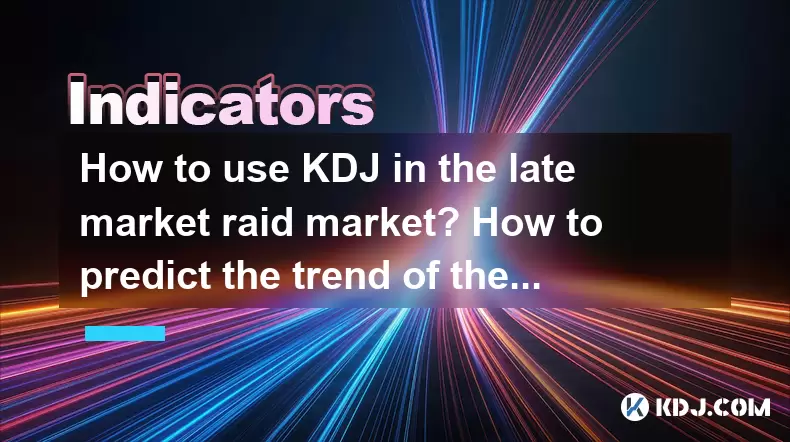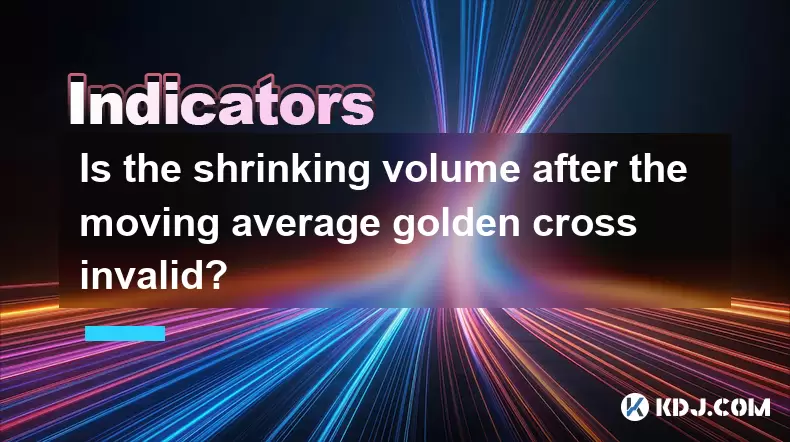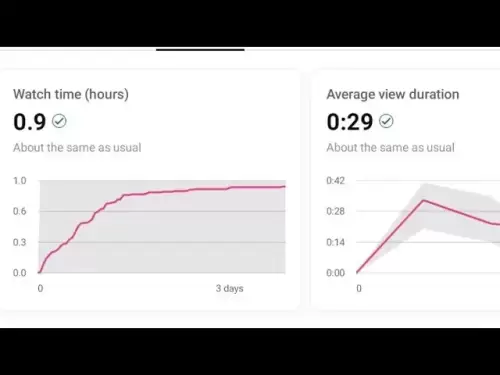-
 Bitcoin
Bitcoin $102,838.3669
-0.64% -
 Ethereum
Ethereum $2,288.9548
-5.70% -
 Tether USDt
Tether USDt $1.0003
0.01% -
 XRP
XRP $2.0782
-2.11% -
 BNB
BNB $632.3292
-1.65% -
 Solana
Solana $136.1959
-2.98% -
 USDC
USDC $1.0000
0.01% -
 TRON
TRON $0.2726
-0.11% -
 Dogecoin
Dogecoin $0.1566
-4.06% -
 Cardano
Cardano $0.5552
-5.18% -
 Hyperliquid
Hyperliquid $34.2720
-1.05% -
 Bitcoin Cash
Bitcoin Cash $466.8638
-1.20% -
 Sui
Sui $2.5776
-5.75% -
 UNUS SED LEO
UNUS SED LEO $8.9685
0.02% -
 Chainlink
Chainlink $12.0304
-5.11% -
 Stellar
Stellar $0.2375
-2.47% -
 Avalanche
Avalanche $16.9243
-3.74% -
 Toncoin
Toncoin $2.8539
-2.82% -
 Shiba Inu
Shiba Inu $0.0...01091
-4.04% -
 Litecoin
Litecoin $81.4197
-2.58% -
 Hedera
Hedera $0.1374
-5.25% -
 Monero
Monero $310.1410
-1.30% -
 Ethena USDe
Ethena USDe $1.0006
0.01% -
 Dai
Dai $1.0000
0.00% -
 Polkadot
Polkadot $3.2843
-5.48% -
 Bitget Token
Bitget Token $4.2110
-1.76% -
 Uniswap
Uniswap $6.4977
-7.96% -
 Pepe
Pepe $0.0...09321
-7.31% -
 Pi
Pi $0.5074
-6.27% -
 Aave
Aave $234.8342
-5.61%
How to use KDJ in the late market raid market? How to predict the trend of the next day?
The KDJ indicator, derived from the stochastic oscillator, helps traders predict price reversals in crypto markets, especially during late market raids.
May 27, 2025 at 07:01 pm

The KDJ indicator is a popular technical analysis tool used by traders to predict potential price reversals in the cryptocurrency market. It is particularly useful in the late market raid scenario, where traders seek to capitalize on the last movements of the day. This article will delve into how to effectively use the KDJ indicator in such situations and how to forecast the next day's trend based on the data.
Understanding the KDJ Indicator
The KDJ indicator is a derivative of the stochastic oscillator, designed to be more sensitive to price movements. It consists of three lines: the K line, the D line, and the J line. The K and D lines are similar to the %K and %D lines of the stochastic oscillator, while the J line is a more sensitive version that often leads the other two lines.
- K Line: Represents the fastest line and is calculated based on the highest and lowest prices over a certain period.
- D Line: A moving average of the K line, smoothing out the fluctuations.
- J Line: Calculated as
J = 3D - 2K, making it the most sensitive to price changes.
Using KDJ in the Late Market Raid
In the late market raid, the KDJ indicator can help traders identify overbought or oversold conditions, which are crucial for making last-minute trading decisions.
To use the KDJ indicator effectively during this time, follow these steps:
- Monitor the K and D Lines: Look for moments when the K line crosses the D line. A bullish signal is generated when the K line crosses above the D line, suggesting a potential upward movement. Conversely, a bearish signal is indicated when the K line crosses below the D line, hinting at a possible downward trend.
- Watch the J Line: The J line can provide early signals of potential reversals. When the J line moves above 100, it suggests an overbought condition, and when it falls below 0, it indicates an oversold condition.
- Combine with Volume: High trading volume accompanying these signals can confirm the strength of the trend.
Identifying Overbought and Oversold Conditions
The KDJ indicator is particularly useful for identifying overbought and oversold conditions in the late market raid.
- Overbought Condition: When the K, D, and J lines are all above 80, the market is considered overbought. This suggests that the asset may be due for a price correction.
- Oversold Condition: When the K, D, and J lines are all below 20, the market is considered oversold. This indicates that the asset may be poised for a price rebound.
Predicting the Next Day's Trend
Predicting the next day's trend based on the KDJ indicator involves analyzing the closing values of the K, D, and J lines at the end of the trading day. Here's how to do it:
- Analyze the Closing Values: At the end of the trading day, note the closing values of the K, D, and J lines. If the K line is above the D line and both are trending upwards, it suggests a bullish trend for the next day. If the K line is below the D line and both are trending downwards, it indicates a bearish trend.
- Consider the J Line: The J line can provide additional insight. If the J line is above 100 at the close, it might indicate a potential bearish reversal the next day. If the J line is below 0, it could suggest a bullish reversal.
- Combine with Other Indicators: For more accurate predictions, combine the KDJ indicator with other technical analysis tools such as moving averages, RSI, or MACD.
Practical Example: Using KDJ in a Late Market Raid
Let's consider a practical example to illustrate how to use the KDJ indicator during a late market raid.
- Scenario: You are trading Bitcoin (BTC) and it's the last hour of the trading day. The current price of BTC is $30,000.
- Step 1: Open your trading platform and locate the KDJ indicator on the BTC chart.
- Step 2: Observe the K, D, and J lines. Let's say the K line is at 75, the D line is at 70, and the J line is at 85.
- Step 3: Analyze the lines. The K line is above the D line, suggesting a bullish signal. The J line is high but not yet overbought, indicating potential for further upward movement.
- Step 4: Monitor the volume. If the volume is increasing, it confirms the strength of the bullish signal.
- Step 5: Make your trading decision. Based on the KDJ signals and increasing volume, you decide to enter a long position on BTC, expecting it to continue its upward trend into the next day.
Combining KDJ with Other Indicators
While the KDJ indicator is powerful on its own, combining it with other indicators can enhance its effectiveness. Here are some ways to do this:
- Moving Averages: Use moving averages to confirm the trend direction indicated by the KDJ. For instance, if the KDJ suggests a bullish trend and the price is above a key moving average, it strengthens the bullish signal.
- Relative Strength Index (RSI): The RSI can help confirm overbought or oversold conditions identified by the KDJ. If the KDJ indicates an overbought condition and the RSI is also above 70, it confirms the likelihood of a price correction.
- Moving Average Convergence Divergence (MACD): The MACD can help confirm trend changes signaled by the KDJ. If the KDJ suggests a bullish trend and the MACD line crosses above the signal line, it supports the bullish signal.
FAQs
Q1: Can the KDJ indicator be used for all cryptocurrencies?
Yes, the KDJ indicator can be applied to any cryptocurrency as it is based on price movements and volume, which are common to all tradable assets. However, its effectiveness may vary depending on the liquidity and volatility of the specific cryptocurrency.
Q2: How frequently should I check the KDJ indicator during a late market raid?
It is advisable to check the KDJ indicator every 15 to 30 minutes during the last hour of trading. This frequency allows you to catch any significant changes in the K, D, and J lines without being overwhelmed by constant monitoring.
Q3: What are the limitations of using the KDJ indicator?
The KDJ indicator, like all technical analysis tools, has limitations. It can produce false signals, especially in highly volatile markets. Additionally, it may lag in rapidly changing market conditions, and it should not be used in isolation but combined with other indicators for more reliable signals.
Q4: Is the KDJ indicator more effective in certain market conditions?
The KDJ indicator tends to be more effective in trending markets where clear overbought and oversold conditions can be identified. In range-bound or choppy markets, the KDJ may generate more false signals, requiring traders to be cautious and use additional confirmation tools.
Disclaimer:info@kdj.com
The information provided is not trading advice. kdj.com does not assume any responsibility for any investments made based on the information provided in this article. Cryptocurrencies are highly volatile and it is highly recommended that you invest with caution after thorough research!
If you believe that the content used on this website infringes your copyright, please contact us immediately (info@kdj.com) and we will delete it promptly.
- Bitcoin in Europe: France's Budding Romance with BTC
- 2025-06-22 12:45:12
- BNB Chain Altcoin Meltdown: Navigating the Storm and Spotting Opportunities
- 2025-06-22 12:45:12
- Inherited Riches: Rare Coin Collection Valued at £6,000 – Is Your Change Worth a Fortune?
- 2025-06-22 12:25:12
- Fiat-Backed Stablecoins, Tokenized Treasuries, and DeFi: A New York Minute on the Future of Finance
- 2025-06-22 12:25:12
- Pumpfun Token Launch Faces Crypto Backlash: A Billion-Dollar Gamble?
- 2025-06-22 12:50:12
- Pepe Coin Price Prediction: Crash Risk and What's Next for Frog-Themed Crypto
- 2025-06-22 13:05:13
Related knowledge

Does the second surge in the RSI overbought zone induce more?
Jun 22,2025 at 08:35am
Understanding the RSI Overbought ZoneThe Relative Strength Index (RSI) is a momentum oscillator commonly used in technical analysis to measure the speed and change of price movements. It ranges from 0 to 100, with values above 70 typically considered overbought and values below 30 considered oversold. When the RSI enters the overbought zone for the firs...

Does the sudden contraction of ATR indicate the end of the trend?
Jun 20,2025 at 11:14pm
Understanding ATR and Its Role in Technical AnalysisThe Average True Range (ATR) is a technical indicator used to measure market volatility. Developed by J. Welles Wilder, ATR calculates the average range of price movement over a specified period, typically 14 periods. It does not indicate direction—only volatility. Traders use ATR to gauge how much an ...

Is it invalid if the DMI crosses but the ADX does not expand?
Jun 21,2025 at 09:35am
Understanding the DMI and ADX RelationshipIn technical analysis, the Directional Movement Index (DMI) consists of two lines: +DI (Positive Directional Indicator) and -DI (Negative Directional Indicator). These indicators are used to determine the direction of a trend. When +DI crosses above -DI, it is often interpreted as a bullish signal, while the opp...

How to filter false signals when the SAR indicator frequently flips?
Jun 21,2025 at 08:43pm
Understanding the SAR Indicator and Its BehaviorThe SAR (Stop and Reverse) indicator is a popular technical analysis tool used in cryptocurrency trading to identify potential reversals in price movement. It appears as a series of dots placed either above or below the price chart, signaling bullish or bearish trends. When the dots are below the price, it...

Is the trend continuation when the Williams indicator is oversold but there is no rebound?
Jun 20,2025 at 11:42pm
Understanding the Williams %R IndicatorThe Williams %R indicator, also known as the Williams Percent Range, is a momentum oscillator used in technical analysis to identify overbought and oversold levels in price movements. It typically ranges from 0 to -100, where values above -20 are considered overbought and values below -80 are considered oversold. T...

Is the shrinking volume after the moving average golden cross invalid?
Jun 22,2025 at 10:42am
Understanding the Moving Average Golden Cross in CryptocurrencyIn the world of cryptocurrency trading, technical indicators play a crucial role in decision-making. One such indicator is the moving average golden cross, which occurs when a short-term moving average crosses above a long-term moving average, typically signaling a bullish trend. This event ...

Does the second surge in the RSI overbought zone induce more?
Jun 22,2025 at 08:35am
Understanding the RSI Overbought ZoneThe Relative Strength Index (RSI) is a momentum oscillator commonly used in technical analysis to measure the speed and change of price movements. It ranges from 0 to 100, with values above 70 typically considered overbought and values below 30 considered oversold. When the RSI enters the overbought zone for the firs...

Does the sudden contraction of ATR indicate the end of the trend?
Jun 20,2025 at 11:14pm
Understanding ATR and Its Role in Technical AnalysisThe Average True Range (ATR) is a technical indicator used to measure market volatility. Developed by J. Welles Wilder, ATR calculates the average range of price movement over a specified period, typically 14 periods. It does not indicate direction—only volatility. Traders use ATR to gauge how much an ...

Is it invalid if the DMI crosses but the ADX does not expand?
Jun 21,2025 at 09:35am
Understanding the DMI and ADX RelationshipIn technical analysis, the Directional Movement Index (DMI) consists of two lines: +DI (Positive Directional Indicator) and -DI (Negative Directional Indicator). These indicators are used to determine the direction of a trend. When +DI crosses above -DI, it is often interpreted as a bullish signal, while the opp...

How to filter false signals when the SAR indicator frequently flips?
Jun 21,2025 at 08:43pm
Understanding the SAR Indicator and Its BehaviorThe SAR (Stop and Reverse) indicator is a popular technical analysis tool used in cryptocurrency trading to identify potential reversals in price movement. It appears as a series of dots placed either above or below the price chart, signaling bullish or bearish trends. When the dots are below the price, it...

Is the trend continuation when the Williams indicator is oversold but there is no rebound?
Jun 20,2025 at 11:42pm
Understanding the Williams %R IndicatorThe Williams %R indicator, also known as the Williams Percent Range, is a momentum oscillator used in technical analysis to identify overbought and oversold levels in price movements. It typically ranges from 0 to -100, where values above -20 are considered overbought and values below -80 are considered oversold. T...

Is the shrinking volume after the moving average golden cross invalid?
Jun 22,2025 at 10:42am
Understanding the Moving Average Golden Cross in CryptocurrencyIn the world of cryptocurrency trading, technical indicators play a crucial role in decision-making. One such indicator is the moving average golden cross, which occurs when a short-term moving average crosses above a long-term moving average, typically signaling a bullish trend. This event ...
See all articles
























































































